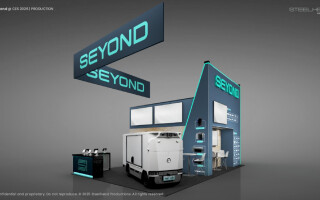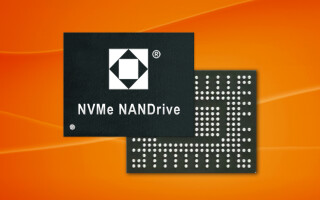5G Primer Part 3: 5G Core Network
September 18, 2019
Story

In today?s column, I?ll be diving into the new 5G core net-work architecture and components description.
5G is a watershed event for mobile network operators. It’s the culmination of the digital transformation that allows network operators to provide a wide variety of value-added services and capabilities in the Internet of Things (IoT) world that is gaining critical mass.
In today’s column, I’ll be diving into the new 5G core network architecture and components description. As with all new technologies, there are a large number of new mnemonics that are introduced, and I’ll do my best to define them as they are mentioned.
5G Core Network Foundations
5G foundational technologies involve Network Function Virtualization (NFV) and Software Defined Networking (SDN). NFV virtualizes the network functions that dramatically increases the ability to scale network functions for traffic load and service types. SDN provides the mechanism by which traffic partitioning, quality of service, and network management can be effectively and efficiently performed.
5G is defined by the 3GPP Working Group using a service-based architecture. Each Network Function (NF) is defined by what services the NF provides. A reference point representation is also defined that shows the interaction between any two network functions. The architecture is governed by the ETSI Technical Specification 23.501 “System Architecture for the 5G System.”
5G Core Network Architecture
Figure 1 below shows the 5G non-roaming service-based system architecture.
Figure 2 shows how the network functions interact with each other.
The User Equipment (UE) block is the 5G device using the network. The Radio Access Network (RAN) was covered in parts 1 and 2 of this series so we won’t cover it here to focus on the 5G core network.
The Network Slice Selection Function (NSSF) selects the Network Slice Instance (NSI) based on information provided during UE attach. A set of Access and Mobility Management Function (AMF) are provided to the UE based on which slices the UE has access to. The Network Exposure Function (NEF) exposes the overall 5G core network services and capabilities.
The Network Repository Function (NRF) maintains the network function profile and performs service discovery within a slice.
The three primary network functions of the core network (CN) are the Access and Mobility Management Function (AMF), Session Management Function (SMF), and User Plane Function (UPF). These functions handle the mobility management, application session management, and application content flows through the core network.
Creating Slices in 5G
A network slice is defined as an end-to-end logical communications network within a mobile network and includes the core network, control plane, user plane functions and 5G access network. Mobile operators intend to use these network slices to house isolated service applications for tenants much like cloud providers sell their compute, storage, and memory resources.
The idea is a customer will provide their bandwidth, capacity, and latency requirements for the application they want to run on a network slice. The mobile operator does a requirements analysis based on current network status and load, creates a service level agreement, and allocates the necessary capacity and bandwidth for the slice. Once the slice is created, the tenant runs their application using the network slice and they can be assured the network slice will adhere to the service level agreement.
5G Core Operation
Network operation starts with the user equipment (UE) connection management with the network. An AMF is selected by the access network to receive the UE registration request. The UE request message includes Network Slice Selection Assistance Information (NSSAI), which helps the core network determine the serving AMF or if a default AMF should be used. The AMF serving the request may query the Unified Data Management (UDM) to get the UE subscription information that includes the network slices available to them. If the UE context in the AMF does not have slice access information corresponding to the type of access being requested, the AMF queries the NSSF to get access to slices information for the UE. Once the UE connection has been completed, the same AMF may be used or the UE may be handed off to a different AMF.
Once connected, the UE uses the N1 interface to perform application sessions establishment with the Session Management Function (SMF) within the accessible slices. The 5G architecture completely separates the control plane function from the user plane function. The SMF uses N4 to perform user plane session establishment. When the session establishment is completed in the control plane, the AMF uses the N2 interface to prompt the RAN to perform the access network resource set-up with the UE. Once the access network resources are established, the RAN sends the session an establish response back to the AMF over N2. This causes the AMF to send the SMF a PDU session update message, which causes a session update exchange between the SMF and UPF.
Add to this the complications of mobility. As a UE travels, a hand-over from one antenna to another may occur. In order to support the ability to make sure the new RAN location has the slice information, the Network Slice Selections Assisting Information is part of the mobility signaling as well. This gives the new RAN node the ability to seamlessly support the active slices in which the UE is communicating.
For example, let’s say our UE is active and has two active slices with sessions running on each. The current RAN node handover preparation starts. This RAN node sends a “handover required” message to the AMF. The AMF sends a handover request to the new RAN node with the PDU session information and the information for the network slices. The new RAN node then responds with a list of accepted and failed PDU sessions. Once received, the AMF sends the handover command to the old RAN node, which makes the transition. Note that the handover doesn’t guarantee that all the active sessions will be maintained – that is a function of the capabilities and access of the new RAN node.
Final Thoughts
The evolution to 5G is arguably the biggest undertaking mobile operators have ever attempted. As you are now aware, all the services and messaging interfaces need to be slice-aware and new functions within the core network architecture are needed to manage and secure network slices. It won’t come overnight, but when the 5G core networks begin to roll out, it will be a huge catalyst for the digital transformation and our new IoT-everywhere world.
For more on this series, check out:




